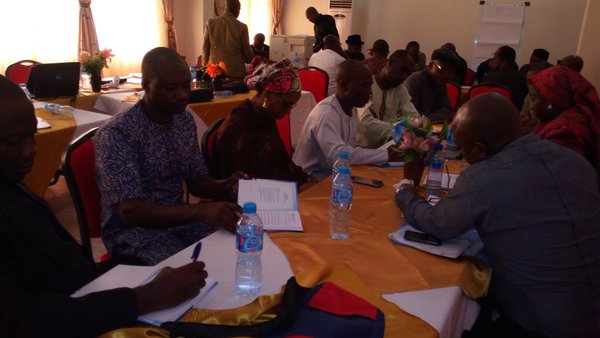Nigeria is putting finishing touches to its National Forest Monitoring Systems (NFMSs) blueprint as it relates to Reducing Emissions from Deforestation and Forest Degradation (REDD+) under the United Nations Framework Convention on Climate Change (UNFCCC).

At a two-day forum last week in Abuja, the federal capital city, stakeholders attempted to tidy up a 68-page plan to implement the NFMS, which is a key element of the REDD+ mechanism.
Essentially, REDD+ implies an effort to create a financial value for the carbon stored in forests, offering incentives for developing countries to reduce emissions from forested lands and invest in low-carbon paths to sustainable development.
REDD+ covers five activities, which were operationalised in 2010 during the 16th Conference of the Parties (COP) to the UNFCCC in Cancun, Mexico. These include: Reducing emissions from deforestation, Reducing emissions from forest degradation, Conservation of forest carbon stocks, Sustainable management of forests, and Enhancement of forest carbon stocks.
Towards devising and implementing the NFMS, countries are requested to establish, according to national circumstances and capabilities, robust and transparent national forest monitoring systems that:
- Use a combination of remote sensing and ground‐based forest carbon inventory approaches for estimating, anthropogenic forest‐related greenhouse gas emissions by sources and removals by sinks, forest carbon stocks and forest area changes; and,
- Provide estimates that are transparent, consistent, as far as possible accurate, and that reduce uncertainties, taking into account national capabilities.
The Nigerian NFMS action plan document comprises eight chapters, which include: Introduction, Action plan development methodology, National circumstances, Capacity assessment, Implementation of the national system of monitoring forest, Risk assessment, Budget and work plan, and Annexes.
The action plan to implement a NFMS for REDD+ under the UNFCCC is an operational document with a standard list of activities that a country can implement to develop its NFMS. The document sets out for Nigeria a potential approach for the implementation of the recommendations of the Intergovernmental Panel on Climate Change (IPCC) based on the guidance and principles by the UN-REDD Programme.
According to a source, the REDD+ mechanism represents a valuable opportunity for Nigeria to contribute to climate change mitigation through improved forest conservation and enhancing sustainable community livelihoods. The objective is to build the REDD+ mechanism in Nigeria, using Cross River State (CRS) as a demonstration model.
“The NFMS represents a key element of the REDD+ mechanism by which reliable information on the forest-related GHG emissions and removals are provided and communicated to the UNFCCC,” said the source.
The UN-REDD Programme is the United Nations collaborative initiative on REDD+ in developing countries. The Programme was launched in 2008 and builds on the convening role and technical expertise of the Food and Agriculture Organisation of the United Nations (FAO), the United Nations Development Programme (UNDP) and the United Nations Environment Programme (UNEP).
The UN-REDD Programme supports nationally-led REDD+ processes and promotes the informed and meaningful involvement of all stakeholders, including Indigenous Peoples and other forest-dependent communities, in national and international REDD+ implementation.
Similarly, the NFMS action plan is intended to inform the government of Nigeria’s National REDD+ Strategy, and follows the National REDD+ Roadmap, as a guide for the implementation of the technical elements of REDD+ required for monitoring, measuring and reporting the outcomes of REDD+ activities and their performance in mitigating climate change.
One of the requirements of the NFMS is that it must be implemented in phases.
“There are three phases, starting with a readiness phase, followed by a second phase where result based activities will be implemented by predictable funding and finally the full MRV system in phase three with payments for verified performance,” he said.
